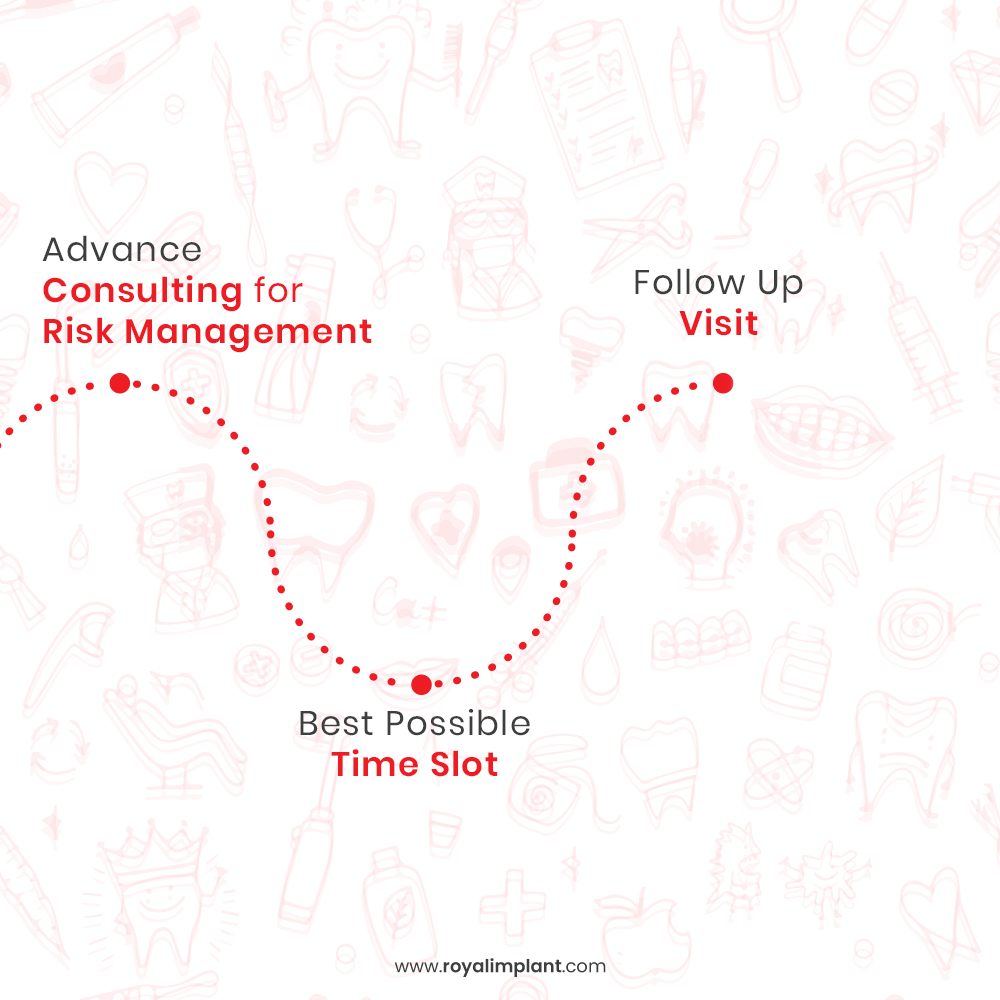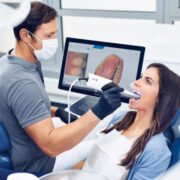Our smiles continue to be eternal jewels in a world where time is passing so quickly and technology is developing at an accelerated rate. Not only does a beautiful grin brighten our faces, but it also shows how much we value maintaining our dental health. But getting the smile of your dreams is a continuous process. It’s a painstaking procedure requiring commitment, knowledge, and a hint of artistic flair. Let’s explore the rationale and structure of patient follow-up and repairs today, revealing the keys to a long-lasting, healthy smile.
Purpose of Follow-Up in Dentistry
In dentistry, follow-up visits serve purposes considerably beyond what is often understood from periodic check-ups. Serving several purposes to guarantee the patient’s continued health and well-being, it is an essential part of all-encompassing patient care.
Monitoring Oral Health at Regular Intervals
Consistently monitoring the patient’s oral health is one of the main goals of follow-up visits.
Dentists may monitor the development of any current therapies, assess the longevity of prior procedures, and spot any new problems at regular intervals.
This proactive strategy allows for prompt intervention, averting possible issues before they become more serious.
Assessing Patient Complaints Post-Treatment
Follow-up sessions offer patients a focused forum to discuss post-treatment problems or concerns, which are not uncommon.
These consultations provide a vital chance for dentists to compassionately and knowledgeablely address patient concerns regarding pain, sensitivity, or the healing process.
Dentists can improve treatment plans and guarantee patient satisfaction by carefully listening to the patient’s input.

Setup for Patient Follow-Up
Diagnostic
A diagnostic setup is similar to a painter’s palette: it is a well-chosen group of instruments that allows dentists to produce their works of art. Every tool has a specific function in the diagnostic process, helping to identify problems and create efficient treatment strategies.
Mirror
The dental mirror is more than a tool for vanity; it is a key instrument for dentists to access difficult-to-see areas within the oral cavity. By reflecting light and providing a clear view, the mirror allows for thorough examinations, aiding in the detection of cavities, plaque buildup, and other oral anomalies.
Probe
A dental probe is a precision tool used to measure pocket depths around teeth. This allows dentists to assess the health of the gums and identify signs of periodontal disease. Gentle probing aids in the early detection of potential issues, guiding treatment plans towards preventive measures before more serious problems arise.
Tweezers
Tweezers in a dental setup are not for plucking but for precise handling of materials and instruments. Whether it’s placing cotton rolls, handling small objects, or assisting in various procedures, tweezers contribute to the meticulous and delicate nature of dental work.
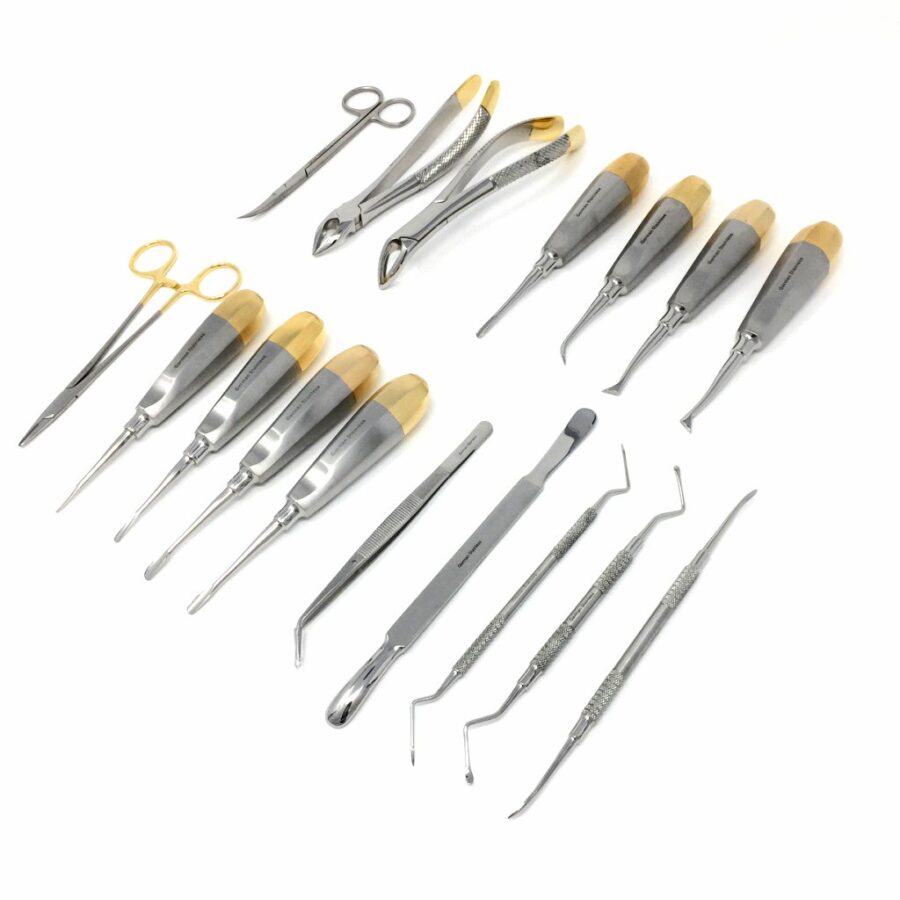
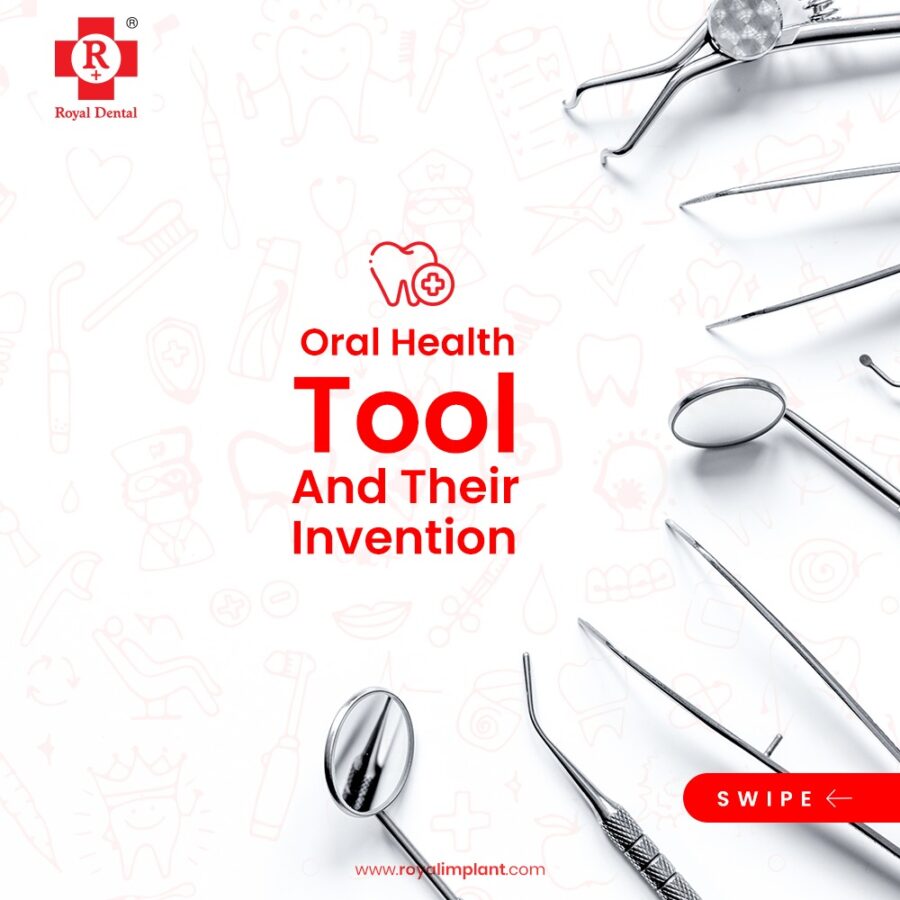
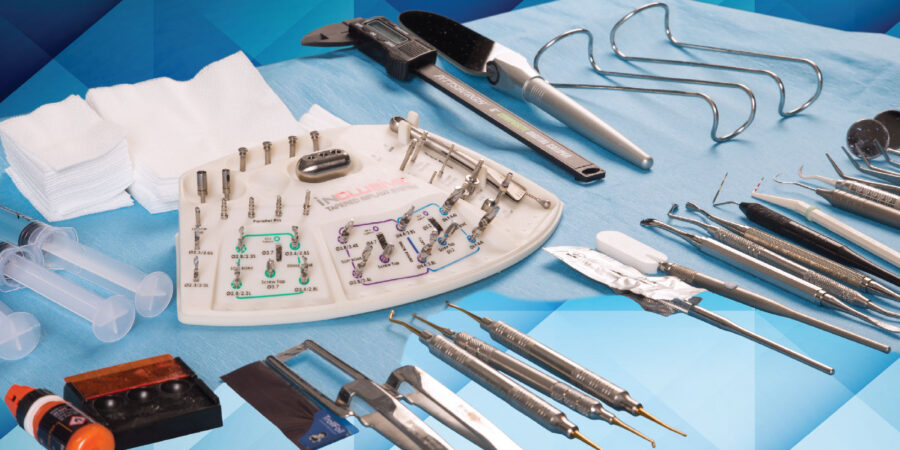
Spoon Excavator
In the world of dentistry, the spoon excavator is a versatile tool used for the delicate removal of carious lesions and soft dentin. Its spoon-shaped end allows for controlled excavation, preserving healthy tooth structure while addressing decay.
Kidney Tray
The kidney tray is a staple in dental setups, providing a sterile and organized space for the arrangement of instruments. It ensures that tools are readily accessible, promoting efficiency during examinations and treatments.
Gauze and Cotton Holder
Gauze and cotton holders are essential for maintaining a dry and clean working environment. Whether it’s absorbing excess moisture or providing a controlled area for dental procedures, these tools contribute to the precision and effectiveness of the diagnostic process.
Waste Receiver
Maintaining a clean and hygienic workspace is paramount in dentistry. The waste receiver serves as a designated space for the efficient disposal of used materials, ensuring a streamlined workflow and adherence to strict hygiene standards.
Occlusion Strip
Occlusion strips are invaluable in assessing the alignment and contact points between teeth. These thin, flexible strips aid in evaluating how upper and lower teeth come together during biting and chewing, guiding adjustments to achieve optimal occlusion.
Burs
Burs are akin to the artist’s sculpting tools, allowing dentists to shape and refine tooth surfaces. Whether it’s preparing a tooth for restoration or addressing imperfections, burs contribute to the precision and artistry of dental procedures.
Purpose of Repair
Dental repairs serve to address issues such as cracks, fractures, and mobile or dislodged crowns and bridges. The primary goal is to restore structural integrity, functionality, and aesthetics to teeth and dental prosthetics.
Materials for Repairs
- Resin: Offers flexibility and durability, bonding seamlessly with tooth structures. Provides stable and aesthetically pleasing restorations.
- Glass Ionomer Cement Type 1: Known for versatility, it adheres to enamel and dentin, releasing fluoride to prevent decay. Suitable for repairs in less stressful areas of the mouth.
- Composite: Blends aesthetics with strength, mimicking the natural appearance of teeth. A reliable choice for repairs that require both cosmetic appeal and durability.
Setup for Repair
A precise and orderly setup that is customized for the particular materials being utilized is necessary for effective dental repairs. To guarantee a smooth repair procedure, every material—resin, glass ionomer cement type 1 (GIC 1), or composite—needs a different configuration of equipment and tools.
Resin Repair Setup
- Resin Polymer: The foundation of resin repairs, providing strength and stability.
- Resin Monomer: Essential for activating and facilitating the bonding process of the resin.
- Spatula: A versatile tool for mixing resin components, ensuring a homogeneous blend.
- Brush: Used for the precise application of resin, facilitating controlled and accurate restoration.
- Carrier: A vessel for transporting and delivering resin to the treatment site.
- Dappen Dish: A small container for holding and organizing the resin components during the mixing process.
GIC 1 Repair Setup
- GIC 1 Powder and Liquid: The fundamental components of glass ionomer cement type 1 are crucial for creating a durable restoration.
- Mixing Pad: A surface for combining GIC 1 powder and liquid, ensuring a consistent and workable mixture.
- Agate Spatula: Specially designed for handling and mixing GIC components with precision.
- Scoop: Facilitates the accurate measurement and transfer of GIC powder.
Composite Repair Setup
- Etchant: Prepares the tooth surface for bonding, enhancing the adhesion of the composite.
- Bond: Facilitates the bonding process, ensuring a strong connection between the tooth and composite.
- Q Tip: Used for the controlled application of etchant and bond.
- Composite Flowable: A fluid composite ideal for intricate repairs and applications.
- Composite Packable: A denser composite for building up and shaping the repaired structure.
- Light: A curing light source to harden the composite material effectively.
- Shield: Protects surrounding tissues from the curing light during the application.
- Composite Instruments: Specialized tools for sculpting, shaping, and applying composite with precision.
Note: Besides diagnostic instruments, a well-prepared setup for the three ensures a meticulous and aesthetically pleasing repair process.
Conclusion
Patient follow-up and repairs are the brushstrokes that turn an empty canvas into a beautiful piece of oral health art. At Royal Dental Clinics, Dr. Chirag Chamria’s concept is about developing long-lasting smiles rather than just treating patients. It’s important to keep in mind that a stunning smile is a treasure that lasts a lifetime as we navigate the complex world of dental care. Thus, here’s to the creators of the smiles and the patients who proudly don them: may your path be illuminated by a thousand smiles.

